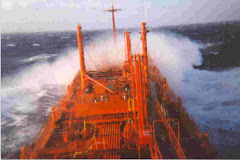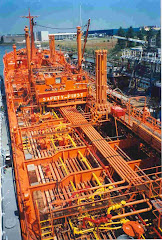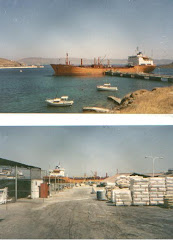I have been
predicting this sort of high profile bankruptcy of a major liner company
as inevitable for years now. There are just too many loss making liner
companies and sooner or later state support would reach its limits. The
whole matter of counterparty risk for the vessel provider companies has been
misconstrued for years now on the false assumption that the liner companies
were just too big to fail.
Seaspan's Gerry Wang calls the Hanjin bankruptcy a nuclear bomb and mixing his metaphors a 'Lehman moment', but did not Wang see this coming? For years, he was ordering aggressively and chartering out to loss makers like Hanjin. His policies contributed to this!
Seaspan's Gerry Wang calls the Hanjin bankruptcy a nuclear bomb and mixing his metaphors a 'Lehman moment', but did not Wang see this coming? For years, he was ordering aggressively and chartering out to loss makers like Hanjin. His policies contributed to this!
This industry suffers from
chronic overcapacity and low margins. Further their business model based
on China and head haul routes is in risk of becoming outdated with the slowing
of Chinese growth and trade rebalancing as well as technologically obsolescent
with the robotics, 3-D printing, etc. I have always been in agreement
with my friend Christopher Rex of Danish Ship Fund on this industry and its
prospects.
I have argued this time and
again with my Wall Street investment bank friends. Hopefully, with this Hanjin
case, they will start to wake up and understand better the container industry
dynamics. See some of my blog articles on this subject over the
years. For example, I was very early to point out the large exposure of
Danaos (NYSE: DAC) to financially weak liner companies.
Danaos was somewhat fortunate with the HMM charters receiving shares in restructured HMM in return for reduced charter rates. In the case of Hanjin, DAC has estimated exposure of US$ 560 million on Hanjin. First estimates are creditor returns of 35% for secured claims. But only 5% for unsecured claims and zero on liquidation. That is quite a mark down!
Over the years, Wall Street
has made some bad shipping calls like the earlier reckless, irresponsible dry bulk
speculative asset plays. Investors in shipping stocks have frequently
lost their shirts.
Of course, the great thing about shipping markets as
opposed to politics in the US and EU - where the usual reaction is to double up
on failed policies, buy time and hide the truth from the public - is that you
cannot hide financial losses, financial resources are limited and there are
natural market corrections, asset write downs and consolidation. Raw Schumpeter capitalism always prevails keeping the industry lean and mean over the long run, but not without significant volatility and market swings.
It is not a good idea to get lost in the noise and ignore supply chain logistics that generates the underlying cargo demand for marine transport.








